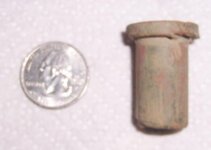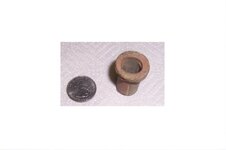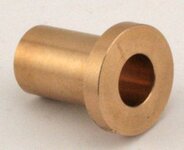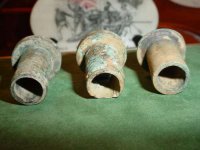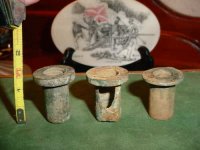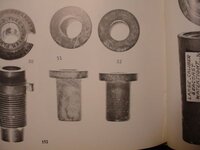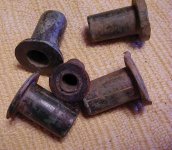sneaky6
Full Member
Hello T-Net,
Thanks for looking and thanks in advance for your help!
In the past 2 years, my digging partner and I have dug a handful of similar brass objects that at a glance remind us of Civil War artillery fuses. The "fuse" is hollow which can not be seen in the pics. There is evidence in the form of scrapes on the outside of the object that it has been forced into a hole (maybe a shell). Likewise, the inside of the fuse seems to have had something forced into it as it has long scrapes as well.
We have dug these items in three different locations in eastern Virginia. At each spot we have found Civil War items and specifically both Union and Confederate Artillery buttons.
If anyone can help with an ID....I would greatly appreciate it!!
Keep Digging!!
Sneaky6
Thanks for looking and thanks in advance for your help!
In the past 2 years, my digging partner and I have dug a handful of similar brass objects that at a glance remind us of Civil War artillery fuses. The "fuse" is hollow which can not be seen in the pics. There is evidence in the form of scrapes on the outside of the object that it has been forced into a hole (maybe a shell). Likewise, the inside of the fuse seems to have had something forced into it as it has long scrapes as well.
We have dug these items in three different locations in eastern Virginia. At each spot we have found Civil War items and specifically both Union and Confederate Artillery buttons.
If anyone can help with an ID....I would greatly appreciate it!!
Keep Digging!!
Sneaky6


